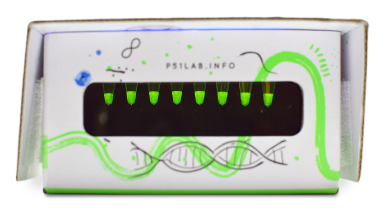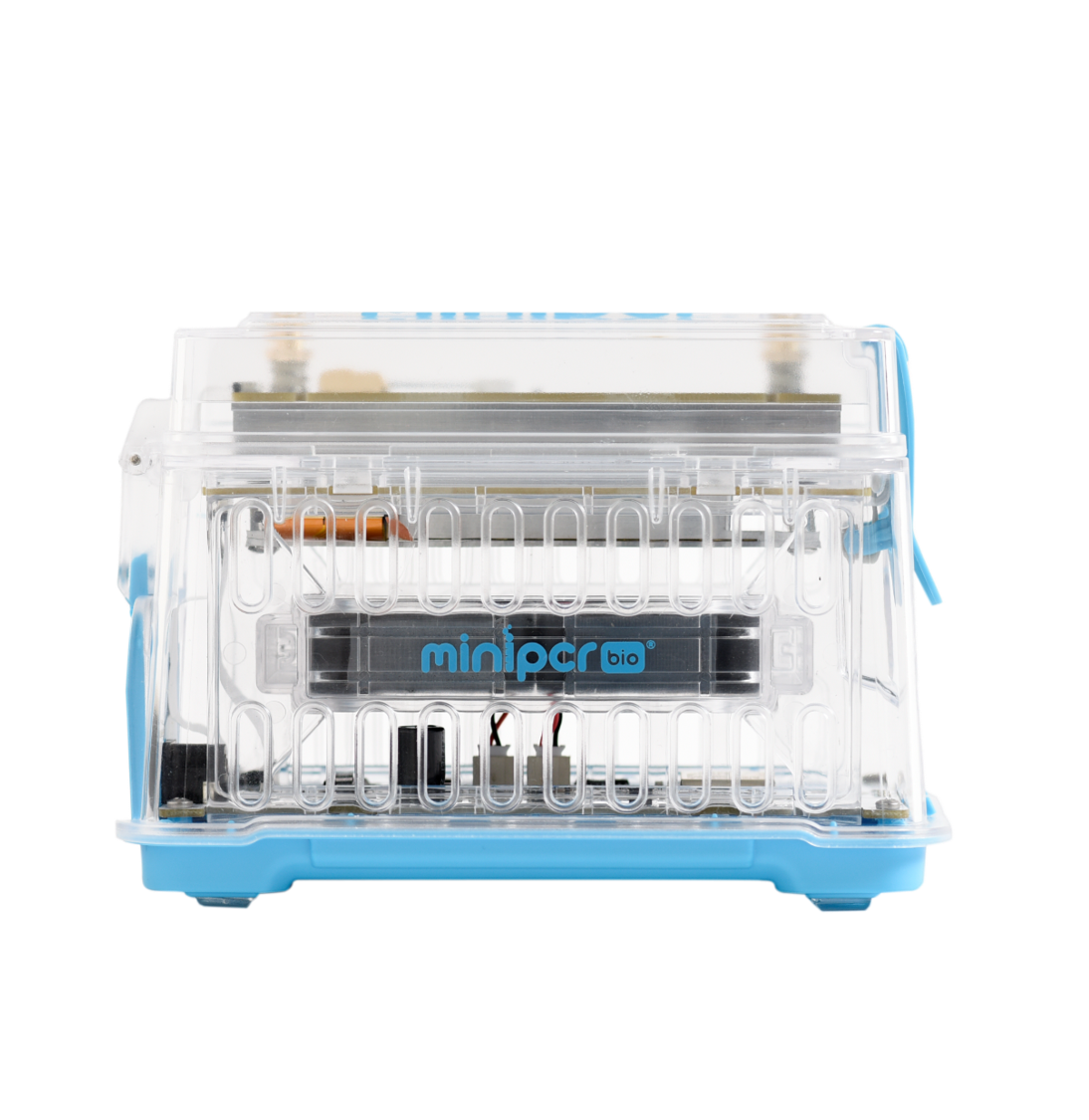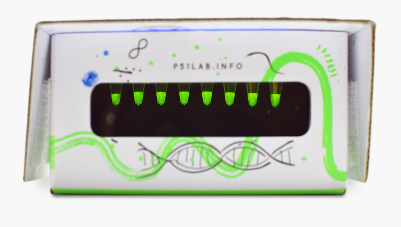Previous generations of ISS researchers were reliant on Earth laboratories
to carry out significant portions of their research projects.
But increasingly, powerful molecular tools are available on the ISS itself.
Genes in Space applicants are invited to use one or more tools
in the ISS’s Genes in Space toolkit as they plan their experiments.
THE TOOLS
Fluorescence
Viewer

What it does:
The ISS's Genes in Space Fluorescence Viewer is a simple tool to visualize fluorescent biomolecules, based on the miniPCR P51™. It’s an easy way to read out experimental results without a need for complicated machinery.
How it’s used:
Scientists can use fluorescence to detect biomolecules in a sample. Some biomolecules, like fluorescent proteins, are naturally fluorescent. Other biomolecules, like DNA or RNA, can be made to fluoresce using special chemicals.
Learn more:
Video: Meet the P51 Fluorescence Viewer
Reading: Fluorescence in biological research
Read a proposal that uses the Fluorescence Viewer
PCR
(polymerase chain reaction)
thermal cycler

What it does
Makes many copies of one gene or sequence of interest in a DNA or RNA sample. Think of it as a genetic photocopier.
How it’s used
PCR is often a critical first step to other genetic analysis techniques like DNA sequencing or gel electrophoresis.
Learn more
Video: What is PCR?
Reading: Polymerase chain reaction
Read a proposal that uses PCR
BioBits®
cell-free
system

What it does:
It’s a protein factory in a tube. BioBits contain all the molecules and cellular machinery needed to make proteins – just add a DNA sequence you’d like to express.
How it’s used:
Cell-free systems like BioBits can be used to manufacture proteins for all kinds of purposes, from medicine and therapeutics to detecting chemicals in the environment.
Learn more:
Video: Introducing BioBits
Reading: Cell-free protein synthesis
Read a proposal that uses BioBits
USE THEM ALONE OR TOGETHER



By amplifying a gene with PCR, then mixing in a fluorescent DNA binding dye, you can test for the presence of a gene in a DNA sample. This is similar to qPCR, a common molecular biology technique.



Make fluorescent proteins with BioBits, then visualize them with the P51.
Learn more about using BioBits and P51 to visualize biomolecules here.



Amplify a gene with PCR, then express the protein that gene encodes using the BioBits® cell-free system.
Learn more about protein expression using BioBits® here.
THE PLATFORM
The International Space Station was designated as a U.S. National Laboratory in 2005 by Congress, enabling space research and development access to a broad range of commercial, academic, and government users. The ISS National Laboratory® is responsible for managing all non-NASA research, and all investigations require the capacity to utilize microgravity for the benefit of humanity.
The ISS is the world’s only permanently crewed orbital research facility.
The ISS on-orbit laboratory enables scientific research supporting innovation on Earth and serves as a testbed for deep space exploration.
